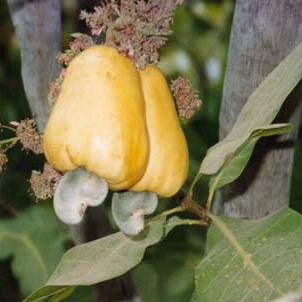Trees, shrubs, at times sarmentose, or suffrutices, occasionally thorny, producing resins, gums or latex. Leaves alternate, opposite or verticillate, exstipulate, simple, pinnate or palmately (1–)3(–5)-foliolate. Inflorescence of axillary or terminal panicles or spike-like racemes. Flowers dioecious, monoecious or polygamous, small, 3–5-merous, actinomorphic or rarely zygomorphic, rarely lacking tepals. Sepals united or sometimes free, imbricate or valvate. Petals usually free, rarely united and adnate to the disk, imbricate or valvate. Stamens inserted round the disk or sometimes on the disk, as many as or twice as many as the petals or numerous; anthers dorsifixed or basifixed, usually all fertile in ?. Disk annular, cup-shaped or stipitiform, entire, crenulate or lobed, or absent. Ovary, sometimes present and vestigial in ?, (1–)3–5(–many)-carpous, 1–6(–many)-locular; loculi 1-ovulate; ovule anatropous; styles free or ± connate. Fruit drupaceous or dry with ± resinous or oleaginous mesocarp and bony or coriaceous endocarp, usually with a 1–plurilocular 1–5-seeded stone. Seeds erect, horizontal or pendulous with membranous or coriaceous testa; endosperm absent or rarely present and very thin
Trees, shrubs or (not in Australia) climbers, often with acrid sap in resin ducts. Leaves alternate, rarely opposite, simple and/or compound; stipules absent. Inflorescence terminal and/or axillary, paniculate, ultimately cymose, rarely flowers in glomerules or cupules. Flowers bisexual or unisexual. Sepals 5, sometimes 4 or 6, usually connate at base. Petals 5, sometimes 4, free, imbricate or valvate, rarely contorted. Stamens equal to, or twice, number of sepals or petals; anthers longitudinally dehiscent, usually introrse; staminodes often present in females. Disc usually present, intra-or extrastaminal. Ovary usually superior, free or partly or wholly immersed in disc; carpels 1–3, rarely 5–12, 1–12-locular, sometimes only basally connate with usually only 1 fertile; ovule 1 per locule, pendulous, apotropous; styles and stigmas 1–12; pistillode often present in males. Fruit drupaceous, sometimes subtended by enlarged perianth or receptacle, 1–12-locular, seed 1, rarely up to 12. Seeds with little or no endosperm; testa adherent to or free from endocarp; embryo straight or curved.
Ovary superior, 1-celled, rarely 2–5-celled, or very rarely carpels free; styles 1–5, often widely separated; ovules solitary, pendulous from the apex or adnate to the ovary wall, or pendulous from a basal funicle
Ovary, sometimes present and vestigial in the male flowers, (1)3–5(?)-carpous, 1–6-locular, rarely multilocular, loculi 1-ovulate; ovule anatropous; styles free or ± connate
Stamens often double the number of the petals, rarely equal or numerous or only one fertile; filaments free among themselves; anthers 2-celled, opening lengthwise
Stamens, inserted round the disk or sometimes on the disk, as many as or twice as many as the petals or numerous, usually all fertile in the male flowers
Fruit drupaceous or dry with ± resinous or oleaginous mesocarp and bony or coriaceous endocarp, generally with a 1-plurilocular 1–3-seeded stone
Seeds erect, horizontal or pendulous with membranous or coriaceous testa; endosperm absent or rarely present and very thin
Trees, shrubs at times sarmentose, shrublets or suffrutices, sometimes thorny, producing resins, gums or latex
Leaves alternate, very rarely opposite, simple or compound; stipules absent, very rarely present but obscure
Flowers dioecious, monoecious or polygamous, small, 3–5-merous, actinomorphic or rarely irregular
Leaves alternate, opposite or verticillate, exstipulate, simple, imparipinnate or (1)3-foliolate
Disk annular, cup-shaped or stipitiform, entire, crenulate or lobed or absent
Inflorescence of axillary or terminal panicles or spike-like racemes
Petals 3–7 or absent, free or rarely connate and adnate to the torus
Seeds without or with very thin endosperm; cotyledons fleshy
Calyx variously divided, sometimes semi-superior in fruit
Flowers hermaphrodite or unisexual, mostly actinomorphic
Sepals united or sometimes free, imbricate or valvate
Trees or shrubs, often with resinous bark
Fruit mostly drupaceous
Disk present

